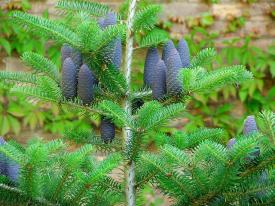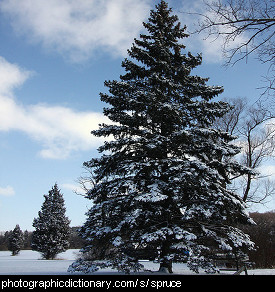Scientific name: family: pinaceae, genus: cedrus
Cedar is a group of pine tree originally found at high altitudes in the Himalayas. Cedar wood is scented by its oil, and is very long lasting. It can be used to make roof shingles and siding that will not rot. Cedar wood is a natural moth repellant, and with that property and the nice smell cedar is a popular choice for making furniture that you keep clothes in.
Scientific name: division: pinophyta
Scientific name: family: cupressaceae
Scientific name: genus: abies
Scientific name: genus: juniperus
Pine trees or conifers come in all shapes and sizes, although most are quite large trees. They all have some features in common. They all have cones instead of flowers. They all have leaves that look like thin green needles. Most pine trees grow from one central point at the top of the tree only and do not branch, which gives most pine trees a distinctive cone shape. Some species do branch, but not as much as most other trees do.
Because pine trees usually grow tall and straight without branching they are commonly grown as plantation timber to harvest their wood for building houses and furniture out of.
Scientific name: genus: Picea
Spruce are large conifers, found in cooler regions of the world. Some kinds of spruce can grow to be 200 feet tall.
Scientific name: taxus baccata
The yew tree is a kind of conifer originally from parts of Europe, Africa, Iran and Asia. It is a small to medium, slow-growing tree, reaching around 10 to 20 metres high. The leaves and seeds of the tree are very bitter and poisonous. The yew's pine cones are unusual, being more like a berry with a single seed. The berries are eaten by some kinds of birds.










